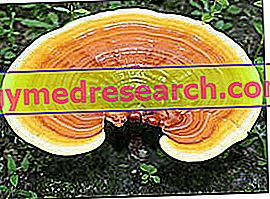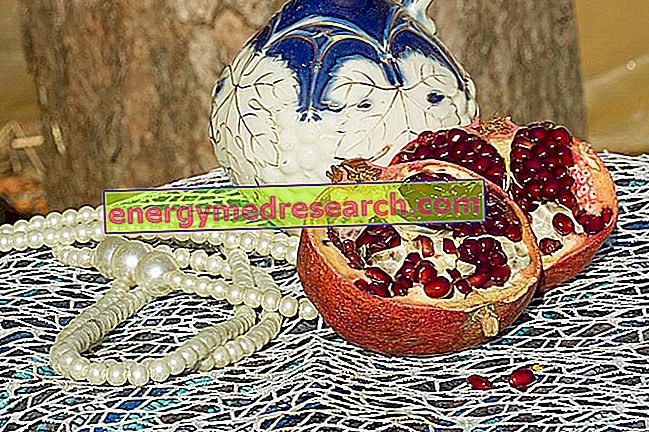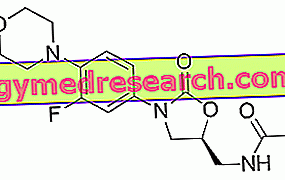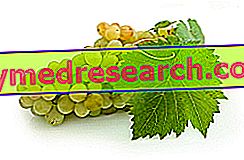Synonyms of Ganoderma, or better, of Ganoderma lucidum (Curtis) P. Karst (or Carso), are Reishi (Japan) and Ling Zhi (China).
Generality
Ganoderma or Reishi are two species of fungi (Ganoderma or Reishi Rosso and Ganoderma or Black Reishi) which are said to have miraculous properties.

Description
Red: from the structural point of view, the red Ganoderma or Reishi is distinguished by the circular red hat with a clear rim, tending to glossy yellow if young and opaque if mature, which can reach 15 centimeters (cm) in diameter. The stem is vertical or oblique, up to 30cm long, nodular and shiny. The flesh is elastic and leathery, with a pleasantly tannic smell and a woody flavor.
Black: the black Ganoderma or Reishi is more widespread in China, macroscopically it is smaller (hat about 6cm in diameter and never more than 10cm), has a brown color and has a more irregular hat shape than the Ganoderma or Red Reishi .
Notes on cultivation
Today, Ganoderma or Reishi is widely cultivated both in Asia (mainly in China and Japan), and in America, but the Japanese population was certainly the first to undertake extensive cultivation of Ganoderma or Reishi (early 1970s) .
As anticipated, the Ganoderma or Reishi is a saprophyte of chestnut and oak, therefore its cultivation requires the presence of partially decomposed wood substrates; there are two Ganoderma or Reishi production techniques:
- In the bottle, by inoculation of the spores in the special wood pulp (not very productive - small mushrooms)
- Canned, by inoculation of spores on pieces of trunk placed in containers of the same material (average production - medium-sized mushrooms)
"Miraculous" components of Ganoderma or Reishi
Ganoderma or Reishi is a medicinal mushroom used in various traditional oriental medical techniques; the active ingredients of Ganoderma or Reishi are:
- Β-glucan polysaccharides and hetero-β-glucans, notoriously anti-tumor and immunostimulant molecules
- Ling Zhi-8 (LZ-8) proteins, anti-allergic, hypocholesterolemic and hypotensive peptides
- Ganoderic acids (triterpenes), sterols that can reduce allergic reactions by limiting the production of histamine, optimizing cellular respiration and promoting liver function.
Ganoderma or Reishi is not the only fungus with beneficial properties; the Shitake, the Maitake and the Cordyceps are also known, which despite having a very similar chemical composition, not containing ganoderici acids (with a bitter taste), are less effective.
NB . Between the Red and Black Ganoderma or Reishi, the former seems to be more effective thanks to the greater concentration of pharmacological principles.
Ganoderma or Reishi can be consumed as a food or as an extract.
Desired effects of integration with Ganoderma or Reishi
Ganoderma or Reishi has been tested in the treatment of numerous diseases and clinical conditions; to the astonishment of scientists, Ganoderma or Reishi has proved very useful for its adaptogen potential, but its effectiveness is not comparable to that of specific drugs.
In light of the above, it is advisable not to overestimate the documented beneficial effects and to interpret them as a valid trace of the studies conducted on Ganoderma or Reishi ( Cancer Research UK Institute).
Beneficial properties of Ganoderma or Reishi: analgesic, antiallergic, preventive from bronchitis, anti-inflammatory, stimulating immune cells Natural Killer (NK), antibacterial due to immunostimulation, antiviral due to increased production of interferon, antioxidant, antitumor, hypotensive, cholesterol-lowering, cardio tonic, antidepressant and relaxing, mucolytic, hinders the HIV virus (both in vitro and in vivo), improves cortico-adrenal function, increases the production of interleukin 1 and 2 produced by macrophages and splenocytes.
Take Ganoderma or Reishi
Although recommended as an adjunct to very complex therapies, Ganoderma or Reishi is a food supplement and not a drug, therefore it is suitable for consumption at any age and physio-pathological state; be clear, the possible intake SHOULD be evaluated and recommended by the primary care physician who, on the other hand, sometimes does not know the composition or the specific effects.
The only warning refers to the chemical interaction between the molecules of Ganoderma or Reishi and the immune system of IMMUNOSOPPRESSI patients and / or organ transplants; in that case, perhaps taking Ganoderma or Reishi would not be advisable.
NB . No side effects are known during pregnancy or breastfeeding, but this does not mean that it should be considered totally harmless.
Ganoderma or Reishi should be taken daily, preferably: in the morning, on an empty stomach, combined with ascorbic acid supplements (vitamin C favors the digestion of fungal carbohydrates) and with good amounts of water to promote renal filtration.
The advantages of Ganoderma or Reishi are variable and depend on physiological interactions; in principle, if the organism is placed in optimal conditions (lifestyle and diet), through the daily integration of Ganoderma or Reishi it should show the first improvements within 10-14 days from the beginning of the food supplement.
Side effects
Both in traditional Chinese medicine and according to contemporary herbalist institutes, Ganoderma or Reishi is considered a SUPERIOR GRASS and 1st QUALITY, which is an absolutely harmless product (also clinically observed and tested) that can be consumed for long periods in the absence of side effects.
However, in some subjects few reactions can be observed in the initial period; for example: digestive disorders, dizziness, bone aches and rashes. Some relate them to a sort of sudden "detoxification", but it is not excluded that they can conceal forms of hypersensitivity, allergies or more generically food intolerances.
Ganoderma or Reishi supplements: quality and form
The quality of supplements based on Ganoderma or Reishi depends on the cultivation (method, quality of the fungus, quality of the wood, climate and environment, etc.) and on the extraction of the active ingredient (method). As can be inferred, the most "cultured and prepared" ethnicity in the production of supplements based on Ganoderma or Reishi is the Japanese one (natural cultivation method); furthermore, given the unpredictability of the market (especially online), we recommend 1) To search for properly labeled brands 2) To avoid purchases of dubious origin.
Ganoderma Reishi can also be consumed in food form. To promote the conservation of the fungus, it is necessary, after harvesting, to cut it and dry it; at the time of consumption, the cooking methods to be preferred for consumption are boiling (for soups) and infusion (for drinks).
The difference between supplements based on Ganoderma or Reishi and the food / drink consists of the concentration of the active ingredients, certainly greater in the supplements than the dried mushroom; however, if it is true that the MAGGIOR quality supplements are marketed in the form of pure concentrate in active ingredients, the poorer ones come from the simple pulverization of the dried fungal pulp and contain levels of exponentially lower active principles.



